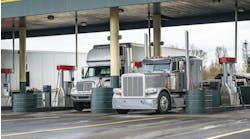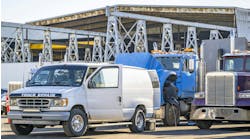There has been a fair amount of talk lately about speed. Here is a sampling of what I’ve been seeing:
- Key trucking industry groups sent comments to Transportation Secretary Pete Buttigieg concerning speed limiter.
- This year’s Operation Safe Driver Week — July 11-17 — is focusing on speeding.
- Accident statistics showed that while miles driven during the COVID-19 pandemic were down, accident rates were up.
- The National Highway Traffic Safety Administration announced there was a 22% increase in vehicle speed in several metropolitan areas it studied.
One side note: Officials think speeding was the culprit of many of the reported accidents, and this, in part, is why the Commercial Vehicle Safety Alliance decided to make speeding the focus for its upcoming Operation Safe Driver safety blitz.
Seeing this stream of information on speeding got me thinking about the whole subject. I suppose some drivers and fleets think that driving above posted speed limits will get them to their destination quicker and perhaps allow for an extra delivery during the driver’s legal hours of service. That may be true, but the question that needs to be answered is at what cost?
We know that driving fast burns more fuel. Depending on who you talk to, for each one mile per hour increase in speed over 60 mph there is a .14 mile per gallon fall off in fuel efficiency. So while speeding drivers may think getting in that extra delivery is making them more efficient, the reality is just the opposite. They are less efficient from a cost of operation standpoint.
That is just one reason why speeding makes no sense. The other, of course, is safety. Preliminary statistics from the National Safety Council (NSC) show the estimated rate of death on the road increased 24% over the previous 12-month period — the highest y/y increase in the 96 years NSC has been calculating the rate.
A minor, but still important is the impact of speeding on tires. Most tires are designed to operate in the 65 to 75 mph range. Operating above those speeds can lead to fatigue. But that is based on tires being inflated properly. When a vehicle with underinflated tires is speeding, will cause the tires to flex which makes the support structure deteriorate and cause excess tire wear.
Driving both efficiently and safely should be top priorities for all fleets. Speeding plays no part in being able to achieve either of those goals. Driving policies and driver incentives should be aligned with these two goals. And safety and efficiency must be valued starting at the very top of the organization and cascading down throughout the entire organization. Everyone must make a commitment to be both efficient and safe. If you strive for those goals, it is easy to see that there is no room for speeding in your operation. Slow down.
Joseph Evangelist joined Transervice in 2007 and currently serves as executive vice president of sales, operations and staff responsibilities. Heavily involved in new business development and account management, his day-to-day focus consists of post-acquisition assimilation planning to maximize new growth and business combination opportunities.



